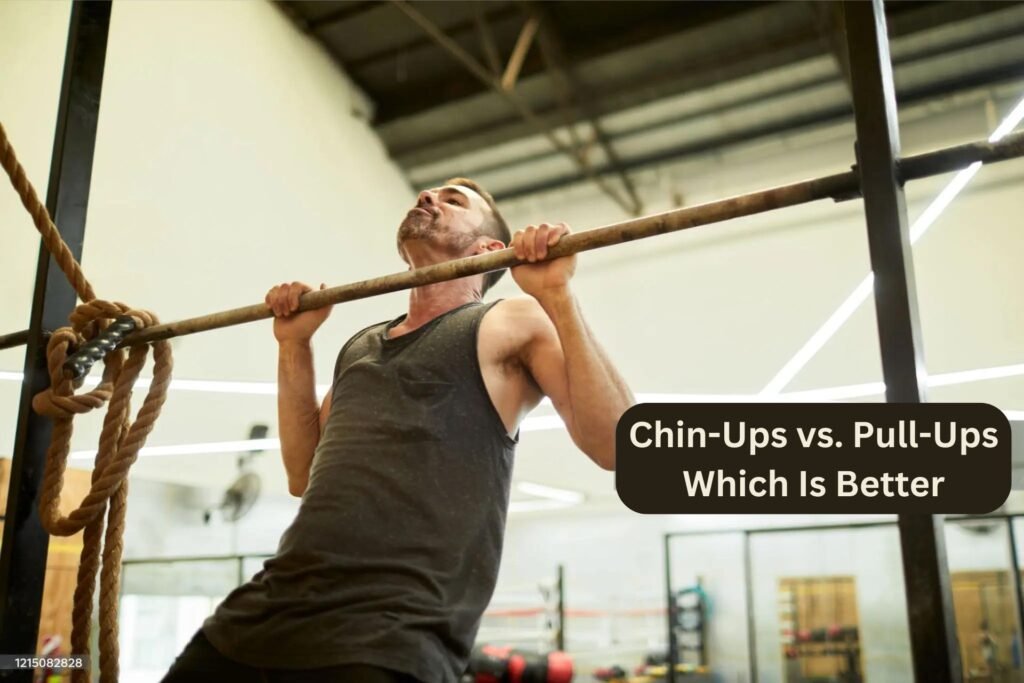Introduction: Why Pull-Ups Are the Ultimate Test of Strength
Can Pull Ups Build Biceps? Here’s How to Max Out Your Gains
You’ve been hammering away at those bicep curls, but let’s be real…
are they getting you anywhere? Can pull ups build biceps better than your standard gym routine?
The answer might surprise you.
If you’re tired of spinning your wheels with little to show for it, stick around because this is your wake-up call.
We’re going deep into why pull ups should be your go-to for bicep gains, and how you can start hitting the bar with purpose.
Close-Grip Pull-Ups: The Biceps Activator
Here’s the deal: when it comes to pull ups, grip matters.
Not all pull-ups are created equal, especially when you’re aiming for those sleeve-busting arms. The close-grip pull-up is a game-changer.
Why?
It puts your biceps in the spotlight, giving them no choice but to do the heavy lifting.
- Hands Position: Keep them 6–8 inches apart. Any closer and you’ll mess up your form; too wide, and you’ll shift the focus to your back.
- Movement: Pull your chest to the bar, not your chin. Get that full range—no half reps.
- Feel the Burn: If you’re not feeling your biceps screaming by the third set, you’re not doing it right.
Don’t rush it!
Focus on slow, controlled reps and let the biceps take the load.
It’s all about that mind-muscle connection.
You can hammer out 10 sloppy pull ups, or you can grind out 5 solid ones that actually work your arms.
Chin-Ups vs. Pull-Ups: Which Is Better for Biceps?
If you’ve been doing regular pull ups, you’re on the right track, but you could be doing better.
Chin-ups take your biceps game to a whole new level.
Unlike pull-ups, chin-ups use a supinated grip (palms facing you), which naturally activates the biceps more.

- Why It Works: The underhand grip puts your biceps at a mechanical advantage. Think of it like switching gears on a bike—you get more power with less effort.
- Execution Tips: Keep those elbows tight to your body. Flared elbows shift the work to your back muscles. You want the biceps doing the lifting here.
- Set It Up: Start every rep from a dead hang to maximise the contraction. No cheating, no half measures.
This isn’t just a bicep workout—it’s a complete upper body assault.
Chin-ups will also hit your forearms, shoulders, and even your abs, but the biceps are the stars of the show.
Learn more about Chin-ups vs. Pull-Ups.
Mastering Time Under Tension: Slow Down, Grow Bigger
Most people rush through their sets, eager to hit that magic number.
But here’s the reality—time under tension is your best friend if you’re serious about bicep growth.
That means slowing everything down and making every second count.
- The Breakdown:
- Pulling Phase: Take 2 seconds to pull up.
- Hold: Pause at the top for a second—own that position.
- Lowering (Eccentric): This is where the magic happens. Slow it down to 2–3 seconds. Control the descent and feel every inch of that movement.
It’s not just about getting your chin over the bar; it’s about the fight you put into every part of the rep.
You want those biceps working hard every step of the way.
Advanced Techniques to Maximize Bicep Activation
If you’re not a beginner, and you’re looking for a challenge, you need to ramp it up.
Here are some advanced pull-up techniques that’ll leave your biceps no choice but to grow:
| Technique | Description | Tips |
|---|---|---|
| Weighted Pull-Ups | Use a dipping belt or weighted vest to add resistance |
|
| Isometric Holds | Hold position at top, middle, or bottom of the pull-up |
|
| Archer Pull-Ups | One arm does most work, other arm assists |
|
These advanced variations not only add intensity but also prevent your muscles from plateauing.
You’ve got to keep your body guessing, or it’ll get comfortable, and comfortable is the enemy of growth.
Pull-Up Bar Bicep Workout Routine
If you’re serious about using pull-ups to build biceps, you need a routine that pushes your limits:
- Beginner:
- Chin-Ups: 3 sets of 5–8 reps.
- Close-Grip Pull Ups: 2 sets of 6–8 reps.
- Isometric Chin-Up Holds: 2 holds of 10 seconds each.
- Intermediate:
- Chin-Ups: 4 sets, AMRAP (As Many Reps As Possible).
- Towel Pull Ups: 3 sets of 8–12 reps.
- Weighted Chin-Ups: 3 sets of 5–8 reps.
- Eccentric Pull Ups: 2 sets, 4–5 seconds lowering phase.
Tackling these variations head-on, with the right form and intensity, is how you break the limits of what you thought was possible.
Common Mistakes and How to Fix Them
Most people think they’re smashing their pull ups, but they’re making rookie errors that kill their gains.
Don’t be that guy.
Here’s what you need to look out for:
| Mistake | Description | Fix |
|---|---|---|
| Poor Form | Arching back, swinging legs, not pulling chin above the bar | Keep body straight, control movement, ensure chin clears the bar on every rep. Focus on quality over quantity. |
| Ignoring Eccentric Phase | Dropping down too fast, missing out on muscle-building potential | Lower slowly, taking at least 2-3 seconds. Focus on the descent to maximize muscle fiber engagement and growth. |
| Incorrect Grip Width | Gripping too wide (all back) or too close (wrist strain) | Find the sweet spot around shoulder-width apart or slightly closer for maximum bicep engagement. |
| Skipping Weighted Pull-Ups | Doing 15+ reps without added resistance, feels like cardio | Add weight gradually. Start with 5 kg and increase as strength improves to keep challenging your biceps. |
| Overtraining | Training pull-ups every day without proper recovery | Do pull-ups 2-3 times a week, allowing time for muscle recovery and growth. Focus on smart, focused effort rather than burnout. |
Conclusion: Stop Overcomplicating Your Workouts
At the end of the day, building biceps doesn’t need to be rocket science. You don’t need fancy equipment or endless isolation exercises.
Pull ups are a simple, powerful way to grow your biceps if you do them right.
Focus on your grip, control the tempo, and never neglect the eccentric phase.
Add in advanced techniques when you’re ready, and most importantly, stay consistent.
Forget the fluff, and put in the work. Your biceps will thank you.
FAQs:
Can pull ups really build biceps, or do I need to do curls?
Pull-ups, especially chin-ups and close-grip versions, effectively target biceps through compound movements. However, adding curls can further enhance bicep growth due to their targeted muscle stimulation.
How often should I do pull ups to see bicep growth?
Perform pull-ups 2-3 times a week to allow for recovery and growth. Avoid overtraining to prevent diminished returns and injury.
Should I add weight to my pull ups?
Yes, adding weight once you master bodyweight pull-ups can boost muscle growth. Aim for 8-12 reps using a dipping belt or vest to progressively overload muscles.
What’s the best grip for targeting biceps in pull ups?
A close or underhand grip (chin-up) is best for biceps, keeping hands 6-8 inches apart to focus the effort on the biceps.
Why aren’t my biceps growing even though I’m doing pull ups?
Issues like poor form, skipping the eccentric phase, and lack of progressive overload can hinder growth. Focus on controlling the descent and continuously challenging yourself.

